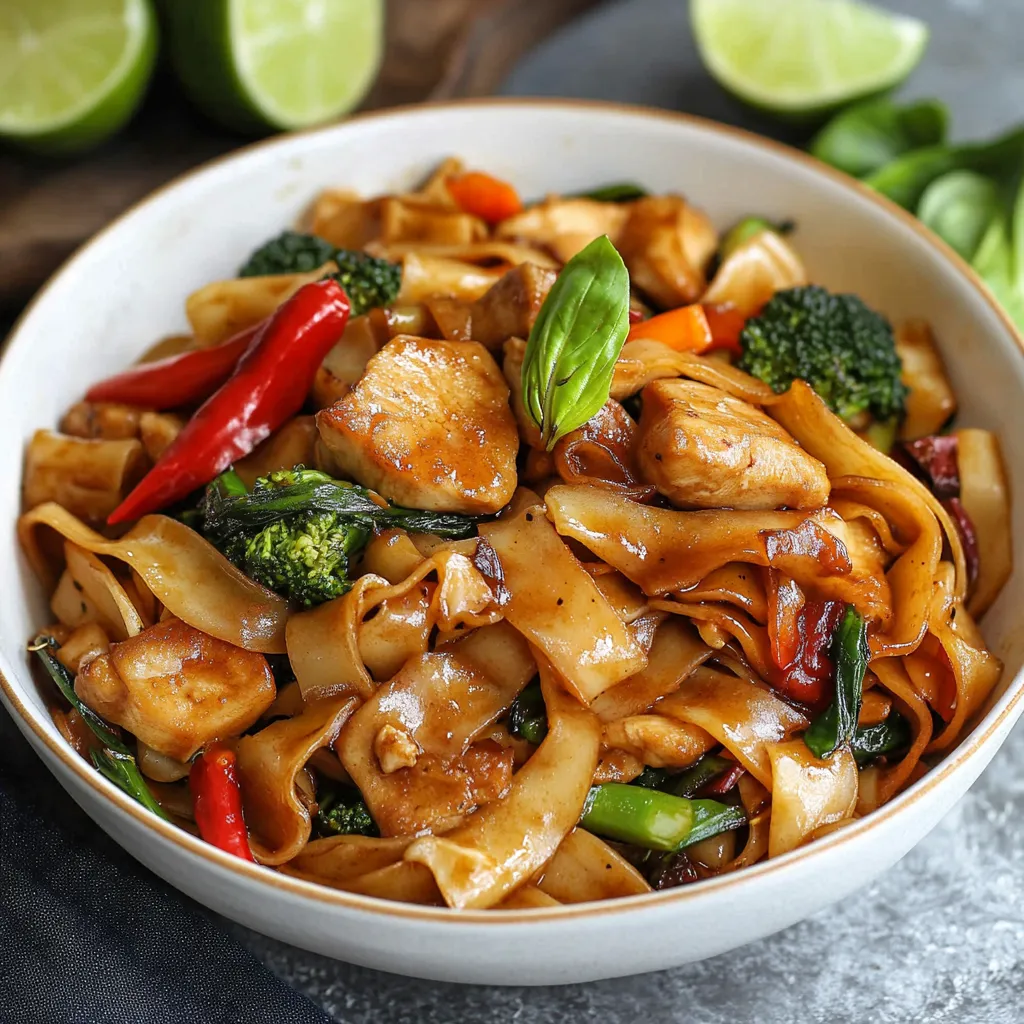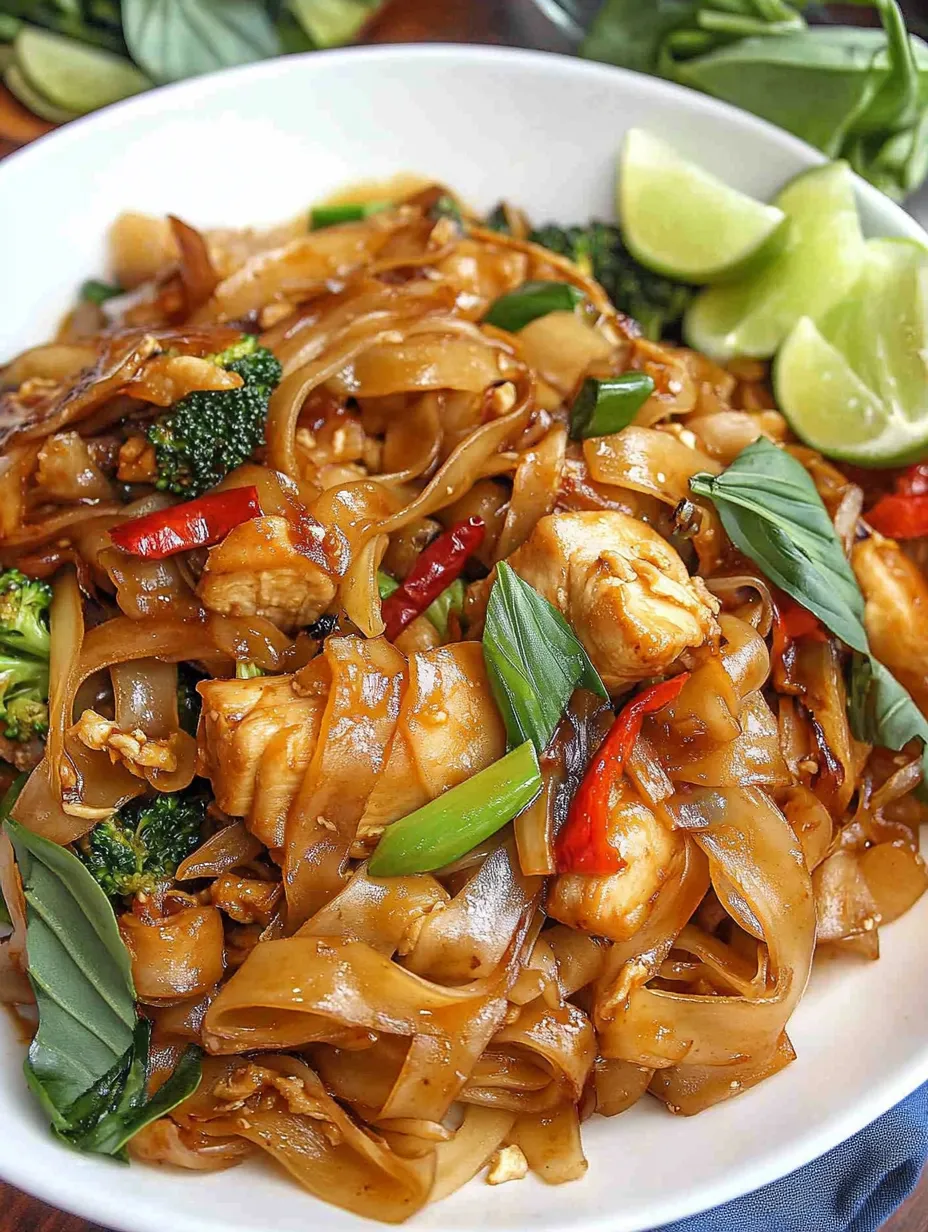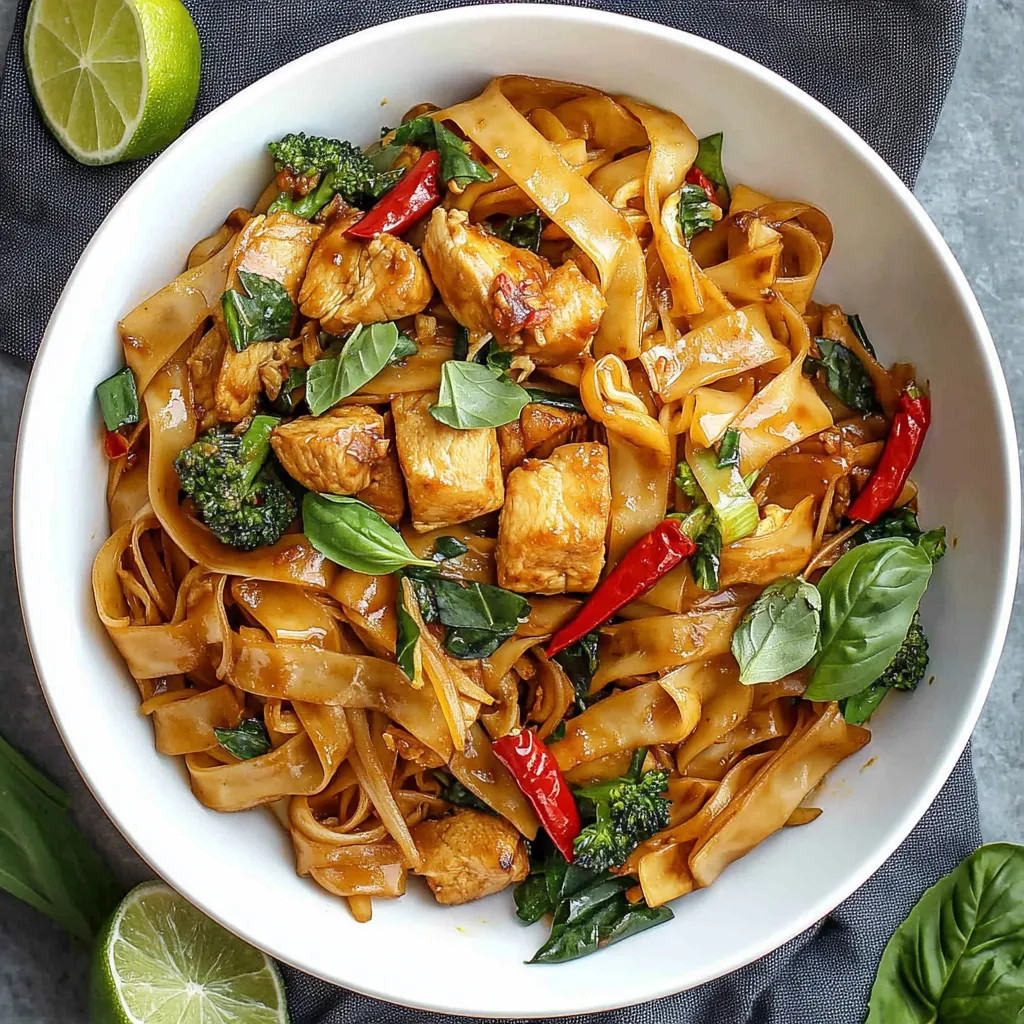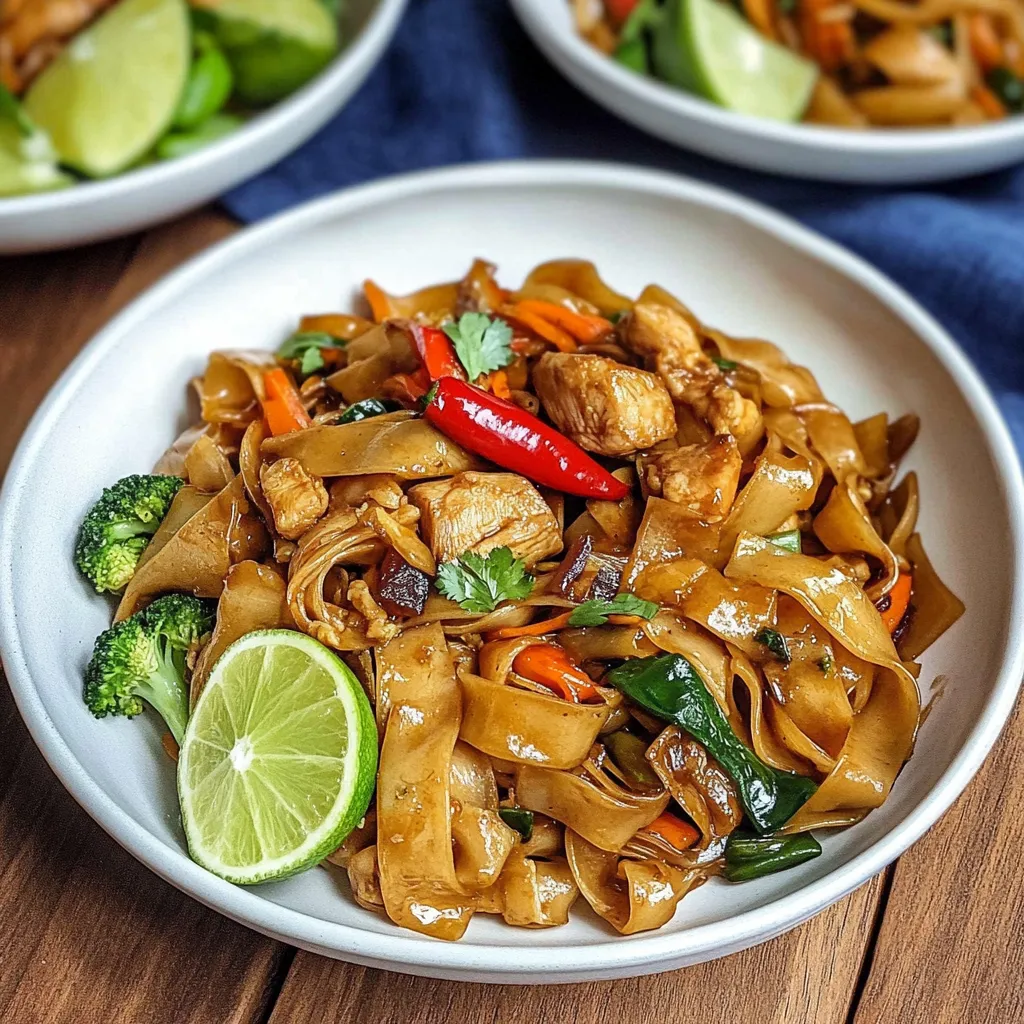 Pin it
Pin it
Mixing sweet, savory, and spicy notes in perfect harmony, these genuine Thai Drunken Noodles hit all the right spots. The broad rice noodles get stir-fried on intense heat with juicy chicken and crunchy veggies, giving you that sought-after "wok hei" - that smoky taste that makes you think you're eating at your favorite Thai spot.
I've spent countless hours getting this dish just right using both woks and regular pans. The secret? Getting everything ready beforehand and keeping the heat cranked up while you cook.
Key Components
- Wide Rice Noodles: Get them fresh or dry (soak dry ones in warm water for 20-30 minutes)
- Chicken Thighs: Chop into 1-inch chunks for quick cooking
- Thai Basil: You can use normal basil in a pinch but it won't taste the same
- Thai Bird Chilies: Try 2-3 for a nice kick
- Fresh Garlic: Chop it right before cooking
- Good Oyster Sauce: This gives the deep savory backbone
Step-by-Step Guide
- 1. Noodle Preparation:
- Getting the noodles right is super important. For dry ones, let them sit in warm water for 20-30 minutes until they bend easily but aren't mushy. Fresh noodles just need a quick cold water rinse. Drain them well and mix with a tiny bit of oil so they don't clump together. Don't boil them – they'll finish cooking in the wok.
- 2. Protein Preparation:
- Cut your chicken thighs into same-sized 1-inch bits for even cooking. Add a little white pepper and salt. Let the meat sit out for 15 minutes before cooking since cold meat will cool down your wok too much. Using shrimp? Cook for just 2-3 minutes. Going with tofu? Give it 3-4 minutes per side.
- 3. Sauce Mixing:
- Mix your oyster sauce with dark and light soy sauce. The dark one gives you rich color and flavor, while the light brings saltiness. Add fish sauce bit by bit, tasting as you go. Your sauce should taste a bit stronger than you want since it'll get less intense during cooking.
- 4. Vegetable Preparation:
- Chop everything before you start the heat. Cut onions into wedges, bell peppers into chunks, and break broccoli into small pieces. Smash the Thai chilies lightly to let the heat out. Keep your garlic and chilies separate from other stuff since they go in first. Having everything ready before you start is the key to good stir-frying.
- 5. Wok Heating:
- For woks or big skillets, heat is everything. Get your pan hot enough that water drops instantly vanish – about 1-2 minutes on high. Add oil and swirl it around. It should shimmer but not smoke. If you're using a regular pan, you might need to cook smaller batches to keep the temperature up. Don't skip this part – proper heat creates that special wok flavor.
- 6. Cooking Process:
- Start with flavor makers – throw garlic and chilies into the hot oil, stirring non-stop so they don't burn. Add chicken in one layer and let it sear before stirring. You want to hear it sizzle – that means your heat is right. Cook veggies based on how hard they are: onions first, then peppers, with leafy greens last. Keep everything moving.
- 7. Noodle Integration:
- Toss in your drained noodles a bit at a time, stirring fast so they don't stick. Pour sauce around the sides of the wok so it gets a chance to caramelize before mixing. The noodles should get some char marks – that's where the good flavor comes from. Don't overfill your pan; work in batches if needed.
- 8. Final Seasoning:
- Throw in Thai basil at the end, tossing just until it wilts. The noodles' heat will bring out its flavor. Taste and fix as needed – more fish sauce for salt, sugar for sweetness, or chili for heat. Your dish should balance the four Thai taste groups: salty, sweet, sour, and spicy.
 Pin it
Pin it
Keeping Leftovers Fresh
Pop any extras in a sealed container and eat within 3 days. When warming up, add a splash of water or chicken stock to bring back moisture. Heat it up in a hot pan - microwaves will turn your noodles into mush.
 Pin it
Pin it
Managing Your Cooking Heat
Knowing how to handle heat is the make-or-break factor for amazing drunken noodles. Go hot at first to get that sear, but be ready to adjust. Look for clues - your food should sizzle strongly but not get blackened. If there's too much smoke or burning, lower the heat or lift the wok off the burner for a moment. You want to keep things hot enough to char slightly without burning. Every stove puts out different heat, so get familiar with yours and make changes as you go.
The Story Behind The Dish
Pad Kee Mao, which means "Drunken Noodles" in English, has an interesting place in Thai food culture. Funny enough, there's no booze in it - people say it's either perfect for soaking up alcohol after a night out, or the name comes from how many chilies go in it, enough to make you feel tipsy from the heat. In Thailand, street cooks make this over blazing fires, creating that special charred taste that's tough to copy at home. Knowing this background helps you see why high heat and bold flavors matter so much for the real deal.
 Pin it
Pin it
Closing Thoughts
This meal brings Thai street cooking right to your table with its big flavors, mix of textures, and that special wok-charred taste. Whether you're feeding family or just working on your stir-fry game, these drunken noodles are both fun to make and amazing to eat.
Frequently Asked Questions
- → Why do they call them drunken noodles?
- The dish doesn't have any booze in it - people say it's either perfect to eat after drinking or because the spiciness makes you walk funny.
- → Can I make a vegetarian version?
- Absolutely, just swap chicken for tofu or mushrooms, and grab some vegetarian oyster sauce instead.
- → What if Thai basil isn't available?
- Regular basil can work in a pinch but won't have that peppery kick. Try adding a bit of black pepper to make up for it.
- → How hot is this dish normally?
- It's usually pretty fiery, but you can tone it down by using fewer Thai chilies or skipping them altogether.
- → Is it OK to prepare stuff beforehand?
- Sure thing, you can chop veggies and mix sauce a day early, but cook those noodles right when you're ready to eat.
